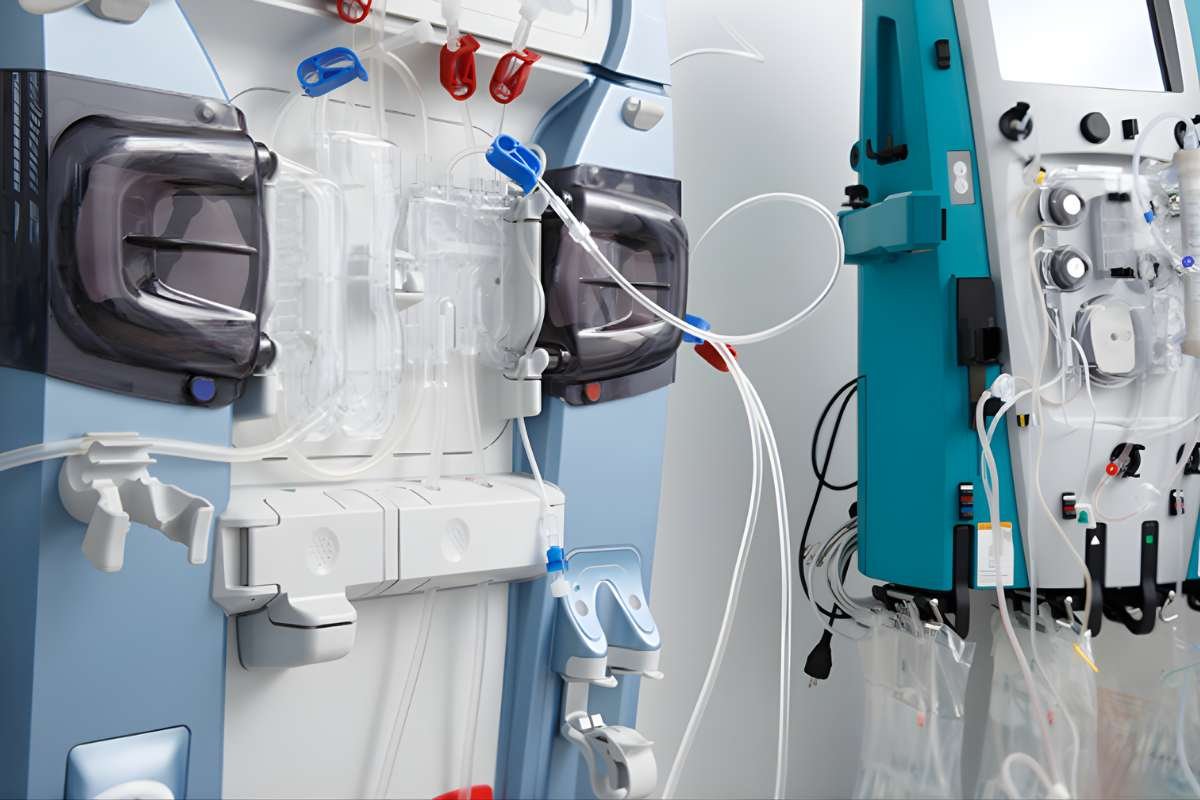These MedTech clinical data collection problems have been found throughout our ten years of work with over 250 medical device studies from across the globe. We keep running across these seven hazards while working in the MedTech business and clinical operations. As a consequence, we decided to share these dangers to assist businesses of all sizes to learn to make better decisions that result in better products.
Here are 5 Key Pitfalls to Avoid in the MedTech Clinical Data Collection;
1. Begin on paper -> Go digital
We highly advise you to adopt digital instead of gathering healthcare data on paper. Companies that adopt a digital strategy gather and manage data considerably more effectively. They also save time and money when it comes to meeting ISO 14155:2020 requirements. You may remotely monitor your clinical data and obtain an overview of what’s going on with your research by employing a digital solution.
Paper, on the other hand, is not as dependable since it may be lost or destroyed, and it is a tough medium to interact with. Utilizing just paper to gather MedTech clinical data collection setting has additional limits. All of that data will have to be transferred to a computer at some point, so you may as well start from the beginning and spare yourself all that effort.
2. Gather Excessive Data -> Begin at the End
We have often seen early-stage organizations beginning their first clinical research, as well as bigger companies with a huge budget, wind up gathering more data than necessary. In doing so, they significantly increase the strain on clinical personnel.

Such as clinical investigators, coordinators, nurses, and others, who may get irritated and demotivated as a result. And, of course, the larger the data collection, the more time you’ll need to devote. So, the answer is to begin at the end:
a. The hypothesis
The most critical aspect of any MedTech clinical data collection-gathering effort is defining your hypothesis.
You will have a difficult time gathering relevant data if you have not formulated a scientific hypothesis. If, on the other hand, you’ve identified your hypothesis but are still gathering data around it, attempt to narrow it down to the specific needs of the statistical analysis/plan and the report you want to make from it.
b. Statistical analysis strategy
As a result, the second stage is generally to specify precisely what you want to offer. What type of statistics or graphs do you want your data to produce so you may offer it to a European body, the FDA for evaluation, or anyone else who might look at your data?
d. Data gathering strategy
The next stage would be to develop your data-gathering strategy. This plan is also not a paper or template that you can locate and download online. It is just a method of defining how you want to gather data, which may be done in a variety of ways. We provide templates that you may use in SMART-TRIAL and that are specifically designed to assist you with this.
In short, this strategy describes what questions you want to ask to develop the reports you’ve chosen to make, how to best construct these questions, and how they’ll all appear together in a digital arrangement (e.g., an electronic case report form, inside an EDC software).
d. Data gathering
The last step is to create a data-gathering activity. This is related to protocol design, in which you determine the number of visits or time points inside an activity, such as a clinical trial. Here, you specify which time points you want to collect data at, which parameters to gather, which techniques to use, and so on.
People often start at this point, as we have seen. After MedTech clinical data collection, they attempt to develop a viable hypothesis. Of course, this is hardly a scientific method. Even if you have established something, we often find procedures being tweaked and changed along the road since they were not created that way.
According to a Danish article on clinical trial protocols submitted to the ethics committee, over 80% of all protocols submitted over ten years have been revised more than three times throughout the research period. That is simply because they were not adequately planned. While you may argue that “you can’t know everything ahead of time,” this approach is still extremely useful to follow before collecting any data.
We can provide a real-life case study from recent SMART-TRIAL research. They had recruited a large number of patients two weeks into the research, and their personnel at the site was unable to keep up with data entry since their design was not well thought out and they were gathering too much data. To remedy this, we had to halt the research and redesign it entirely.
3. Ignoring the Individual -> Include PRO Data in Your Research
As device makers, you want to concentrate on your product. You conduct pre- and post-market efforts to assess how your technology performs on safety and effectiveness metrics. However, while deciding how to organize your research, keep in mind that the person is at the core of it all.
This person wants to engage and provide data, but most importantly, they want to live a better life or obtain some advantages from using or being treated with your technology. As a result, using Patient Reported Data (PRO/ePRO) in your research is an excellent option for MedTech clinical data collection.

Regulatory entities and responsible authorities place a higher emphasis on having PRO data on your device. Even though this is being promoted much more these days, we still see far too many businesses that fail to incorporate it. Patient Reported Outcome data is not difficult to get since it is information that patients are typically eager to contribute.
Because patient data is quite useful in connection to your technology, it may be very advantageous later on when you need to go to market or document safety and performance factors. Learn how SMART-integrated TRIAL’s ePRO simplifies PRO collection.
4. Overreliance on KOLs -> Look Beyond Clinical Evidence
We are well aware that many medical device firms lack clinical knowledge in-house and depend on key opinion leaders (KOLs) to conduct studies. However, we must keep in mind that clinical evidence is not necessarily the most important factor. It is not always enough to just listen to the clinical investigators who indicate which endpoints to concentrate on.
If your gadget detects blood pressure, for example, it is critical to measure the blood pressure itself since you will most likely compare it to the clinical norm. However, keep in mind that placing blood pressure monitoring equipment on the market is not difficult.
There are hundreds upon thousands of gadgets on the market, which may make it more difficult for you to distinguish yours. This is true not just for comparable or predicate gadgets, but also for innovative technology. This is because, once again, the emphasis on MedTech clinical data collection comes not just from regulators but also customers.
So, planning ahead of time and including a question about factors that may impact market access, health economics, and other questions that could be asked during the clinical trial on the usability of the device, or feedback from staff on their experience, may be far more valuable than focusing solely on clinical performance and outcomes.
Returning to Pitfall #2, we must be careful not to acquire too much data. So, use caution since there is a fine line between too much and too little data. While there is no hard and fast rule for when to stop and when to cease MedTech clinical data collection, the general norm is to go a bit farther forward and go beyond the clinical evidence. Consider market access tactics, sales, operations, and procurements, as well as if your research may contain minimum data collecting parameters or outcomes to support that approach.
5. Failure to Remember the Clinical Workflow -> Test, Test, and Test
When planning your research and how your device will be used in practice, keep in mind that how your device is utilized will influence the design of your study. In other words, MedTech clinical data collection attempts to organize your research such that submitting data or providing feedback on the gadget’s performance becomes part of the natural flow of using that device.
So, don’t attempt to put more load on physicians at inconvenient times or introduce extra stages that result in bad data. Also, bear in mind that not all websites are created equal. There are distinctions across clinics in terms of what they are accustomed to doing and how they function. So, attempt to include your end customers as much as possible while creating your research or deciding how to conduct it.

Otherwise, you risk not receiving the data you need. And the remedy is to test, test, and test again. We cannot emphasize enough the necessity of testing your research with actual people. Begin testing research internally with colleagues, then with doctors if they are engaged in data collection, and lastly with patients.
Competent Authorities in Europe have begun to insist that you include patients in the definition of your eCRF (electronic Case Report Form) and that you include patients at every stage of the process before applying to the Ethics Committee. While testing, you’ll see where the barriers to receiving the kind of data you need are, and where you’re putting too much burden on doctors or patients to get the data in.
Current manner, you may detect hazards and reduce them by smoothing out the MedTech clinical data collection plan or by collecting fewer data in this trial and more data in a follow-up study. If you think about it carefully, it doesn’t have to be more costly to do two distinct studies instead of one. It merely takes proper preparation and ensuring that your resources are utilized appropriately.
To Know More About Medtech: The Ultimate Guide to a Successful Medtech







